Visual Art
Photographer Tony Chirinos contemplates life and death in ‘The Precipice’ at UM
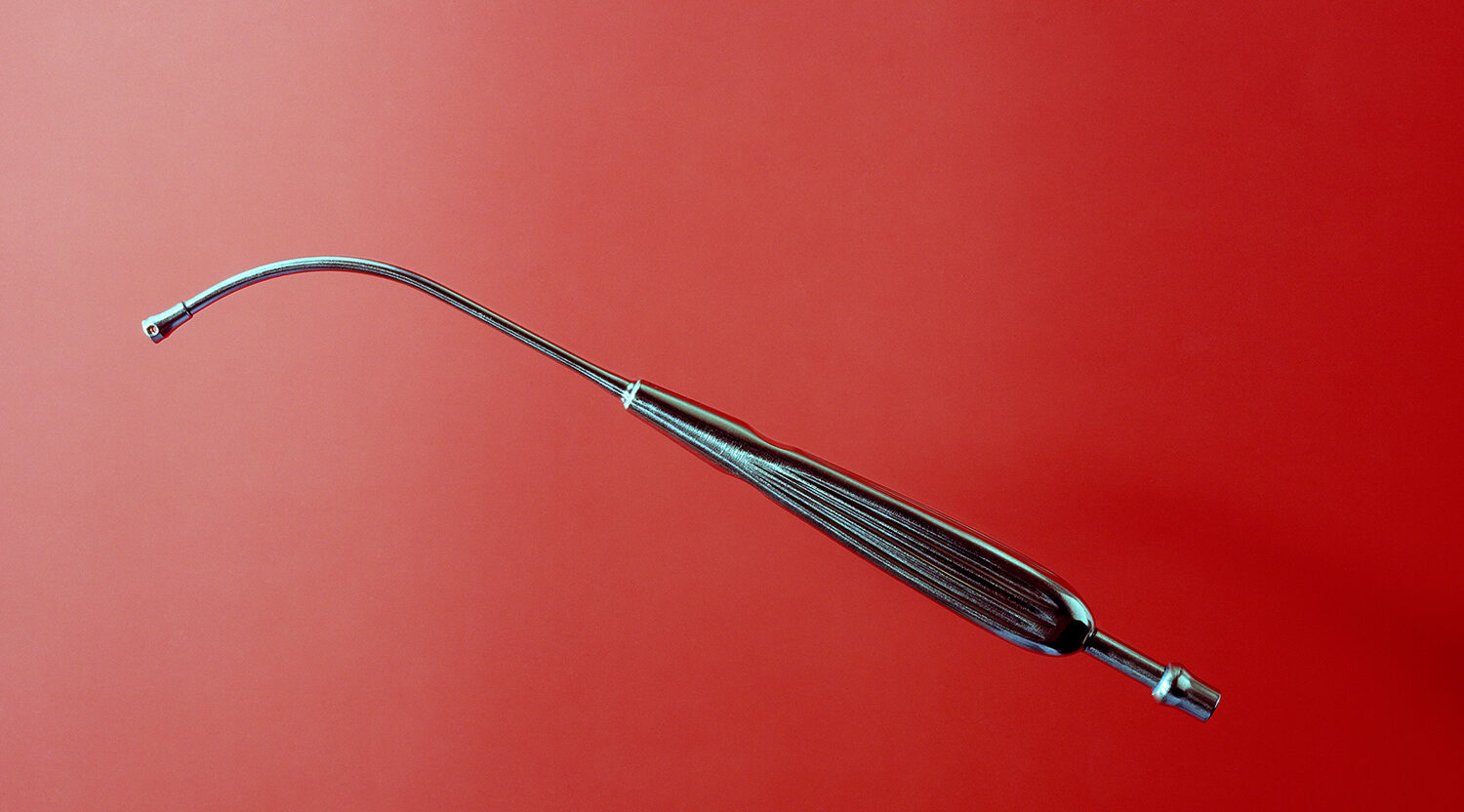
Tony Chirinos’s exhibit “The Precipice” at the University of Miami Art Gallery features photographs of surgical tools, like this Yankauer Suction Tube, suspended against bright-colored backgrounds. (Photo courtesy of Tony Chirinos)
Tony Chirinos is accustomed to seeing and capturing things that would shock the average person. For years, working as a medical photographer for Miami-area hospitals, he shot photos of surgeries and autopsies, developing an oeuvre that meditates on the frailty of life and the finality of death. But he recalls a time when one viewer’s response to his work shocked him.
“I had a group show in New York,” Chirino recalls, “and I had this lady come up to me, a tiny, petite, elder lady, and tell me that my pictures were the most horrific pictures she had ever seen. And when I started looking at her, she had a number tattooed on her arm.”
The woman was a Holocaust survivor, and Chirinos’ photos reminded her of the concentration camp crematoriums that she had narrowly avoided.
The artist, now a professor at Miami-Dade College, Kendall, says it’s never his intention to offend anyone, but that the content of his photos sometimes elicits extreme reactions. In the case of the elderly woman, he says he was saddened by her experience but grateful that his work provoked such an emotional response.
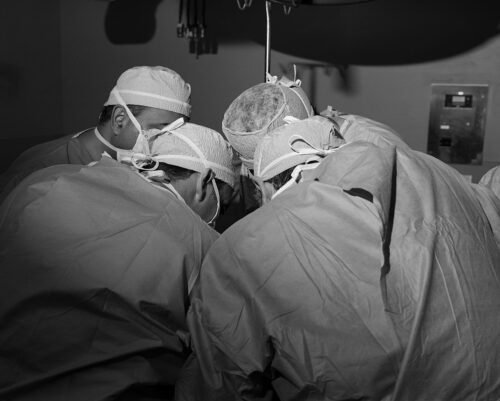
The operating room is a place where questions of life and death are posed. (Photo courtesy of Tony Chirinos)
“I’m a documentary-style photographer. I don’t move anything, I don’t touch anything, I photograph what I see in my own style,” he says. “My main goal is to show images to people and not give answers, so that they look at a photograph and there’s more questions to be asked, (rather) than just give the complete answer of what it is.”
This is exactly what Chirinos planned for his upcoming solo exhibition, “The Precipice,” at the University of Miami Gallery in the Wynwood Building. Based on his eponymous first photography book, published by Portland, Oregon-based boutique photo book publisher Gnomic, “The Precipice” also replicates the book’s three-part structure, placing photos from each chapter on the gallery’s three walls.
Each takes a different subject as their focus, from the monochromatic depictions of mortality in “Farewell” to the somewhat fetishistic photos of surgical tools suspended against bright-colored backgrounds titled “The Beauty of the Uncommon Tool,” after a Walker Evans photo project, “Beauties of the Common Tool,” originally published in 1955.
“They’re tools that were used in surgery photographed in a beautiful, ethnographic way. So I take (the tools) out of their context and have people think about them. ‘What is that going to be used for? What part of the body is it used for? Why is it so beautiful? Why am I attracted to something that is so horrific? Why am I looking at it like it’s candy to the eye?” explains Chirinos.
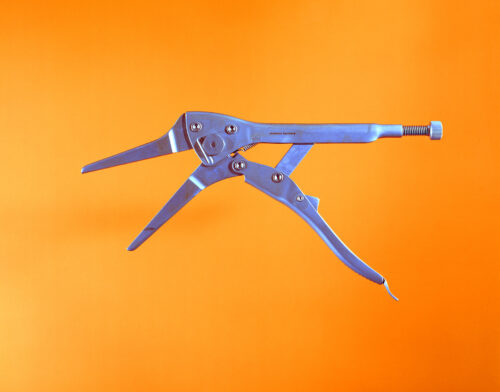
Long Nose Ortho Vise: ‘I take (the tools) out of their context and have people think about them’ the photographer says. (Photo courtesy of Tony Chirinos)
Chirinos found his vocation after he lost a scholarship to what was then Miami-Dade Community College, ironically where he now teaches. Not wanting to shame his parents, immigrants who had escaped Cuba via Venezuela, he concealed the setback and found a summer job as an assistant to the photographer at Miami Children’s Hospital. He quickly earned a promotion two months later, becoming the hospital’s official photographer when his supervisor quit. There was one major problem, however: He didn’t know anything about cameras.
“I found this organization called the Biological Photography Association,” he recalls. “And so, I reached out to them, told them what my predicament was, and they really helped me.”
The association gave him instructions on everything from photographing surgeries to which lenses to use. Although most of his work involved taking educational photos of medical procedures for teaching doctors, he also took portraits and family photos for staff, ribbon-cutting ceremonies, and anything else the hospital needed. He supplemented his pay with freelance work and his own projects in order to make ends meet.
The most interesting assignments, he says, involved surgeries and autopsies. These, Chirinos recalls, he took very seriously, especially when he returned to school at FIU, where professors encouraged him to think of his work as more than a job.
“You have to respect the HIPAA law,” he says. “What could I do to protect the patient and not lose my job? So, I spoke to administration and public relations, and basically they gave me the green light, they just said ‘just make sure no identification is shown.’”
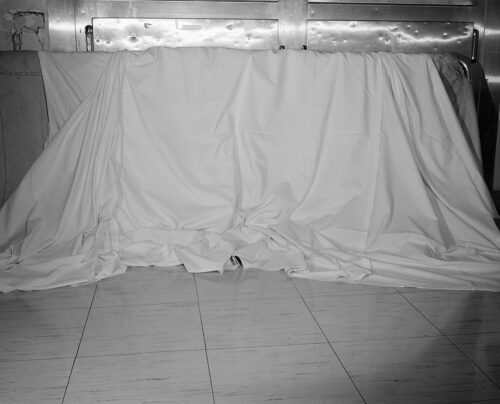
An image from a hospital ward in “The Precipice” suggests a theater curtain. (Photo courtesy of Tony Chirinos)
Intensely aware of the privacy risks his work could pose, Chirinos became adept at photographing around the patient. He would snap shots of surgical tools, of lights, of sheets draped in various positions and of doctors huddled around the table. Many of his shots are photographed in dramatic, clinical black-and-white, imbuing them with all the power and severity that comes with going under the knife. They’re perhaps more provocative for what they don’t show, and this could explain the intense reactions.
“I love making the viewer create their own horror in their head,” he admits.
Following the UM Gallery exhibition, “The Precipice” will travel to Brooklyn’s Transmitter gallery in April. The show marks Chirinos’ New York gallery debut and a peak of interest in his work, which he attributes to the COVID-19 pandemic. The photographer says he struggled to find an avenue for publishing and showing his work before the pandemic, but considers that the event made some reassess their own relationship to death. And certainly, in a sense, Chirinos’ photos provide a certain memento mori.
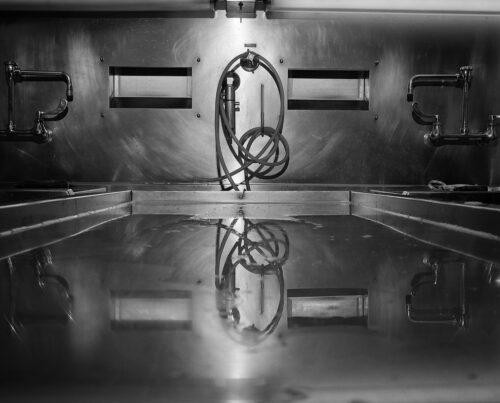
“The Precipice,” both the book and the exhibition, are a summation of nearly two decades working as a biomedical photographer in Miami. (Photo courtesy of Tony Chirinos)
“We don’t know what ephemeral relationships and feelings anybody’s gonna get when they look at these pictures. The only thing that I’m trying to do is (tell people) that you have to look at your own mortality,” Chirinos says. “If there’s one thing we’re all gonna do, it’s that we’re all gonna die.”
WHAT: Tony Chirinos: “The Precipice”
WHEN: Friday, Feb. 1 through Friday, Feb. 24. 9 a.m. to 5 p.m. Monday through Friday. Opening reception 6 to 9 p.m. Saturday, Feb. 11.
WHERE: University of Miami Art Gallery in the Wynwood Building, 2750 NW 3rd Ave., Miami.
COST: Free
INFORMATION: 305-284-3161 or art.as.miami.edu
ArtburstMiami.com is a nonprofit source of dance, visual arts, music and performing arts news. Sign up for our newsletter and never miss a story.
